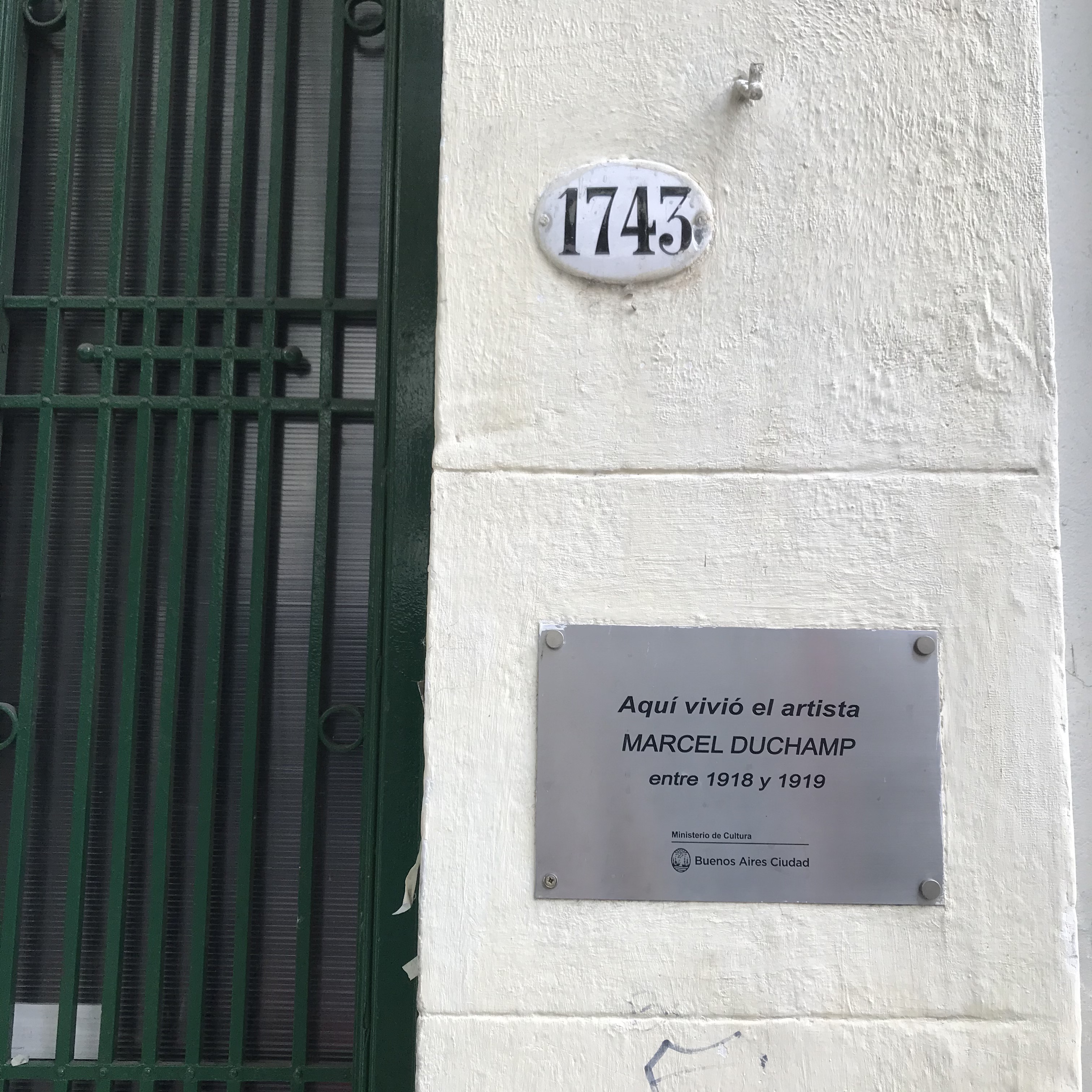French-born Marcel Duchamp has become one of the most emblematic artists of avant-garde art of the twentieth century. Most of his œuvre and artistic career is associated with coordinates between Paris and New York, yet a lesser known episode of his life is his nine-month exile in Buenos Aires between September 1918 and June of 1919.
One of the motives that drove his departure from New York was the United States’ involvement in the First World War in 1917 and the establishment of an increasingly patriotic environment that affected the carefree energy and social dynamism of the city (Demos 2007, 73). He sought out a neutral territory, and under “Duchamp’s self-professed ‘spirit of expatriation’ around World War I” (Demos 2007, 7), he chose Buenos Aires as his destination after his three-year stay in New York. On 14 August, 1918, he boarded the SS Crofton Hall with his friend Yvonne Chastel and arrived at Río de La Plata on 9 September.
His uncertainty about his destination was illustrated in his drawing Farewell to Florine in which he represented the American continent in black ink and his Atlantic sea journey south with a blue line connecting a house with the legend 1915–1918 at its northern end and ending with a big red question mark at its southern end. On his arrival, a letter to American friends Carrie, Ettie and Florine Stettheimer bearing the headline “I have no fixed address”, described Duchamp’s first acquaintance with the city: “I know nothing, I know no one, I don’t speak a word of Spanish, but I equally have fun. Don’t believe a word about Buenos Aires being too expensive”. He added that there was “butter like you can't get on Columbus Avenue dear” (Marcel Duchamp 2008).
Soon after, another letter, to his American patrons Louis and Walter Arensberg showed that he was adapting to the city: “Already a true porteño! Two months here. I know the city by heart, very provincial, very familiar. The society, too much importance and very closed-minded” (Marcel Duchamp 2008). This pejorative view of the city strengthened and “as months went by, the mediocrity of Buenos Aires’ upper middle class had drained all the substance from the city until it turned into a kind of nothing, a slavish copy of degraded European models” (Speranza 2010, 5).
One of the pieces Duchamp took to Buenos Aires was Sculpture for Travelling of 1918, a soft sculpture made of rubber strips cut from bathing caps, joined together and suspended. It was first set up in his New York studio in 33 West 67th Street, then transported and rearranged in his Buenos Aires house at Alsina 1743 (the sculpture is lost, but a photograph of it hanging above Duchamp’s couch was included in La boîte-en-valise). Its malleability and formal instability, together with its mobility in space, created completely different and ephemeral pieces, literally transformed by travel.
In addition, he produced drawings for his The Large Glass sculpture and had brought with him the preliminary work The Small Glass, to be called To Be Looked At with One Eye, Close To, for Almost an Hour. In his studio at Sarmiento 1507, only a few blocks from his apartment, he organised his notes on The Large Glass and examined the relationship between vision and materiality (Speranza 2010, 6).
Finally, the third main work Duchamp developed while in Buenos Aires was Unhappy Readymade, the only work he conceived in the city. It was a wedding gift to his sister Suzanne on her marriage to the artist Jean Crotti and was sent as a set of instructions to be carried out in Paris. The couple were required to hang a geometry book on their balcony and let the weather and time freely affect the object. As with Sculpture for Travelling, mobility played a major role, but in this case what travelled was not the material form but the idea, symbolically placing Duchamp in Paris and away from Buenos Aires.
Overall, though the tranquillity of Buenos Aires offered a great opportunity for working, Duchamp’s routine mainly focused on playing chess and his involvement in the local artistic scene was minimal. After learning of the deaths of his brother Raymond and his friend Apollinaire, he decided to return to Paris by July 1919. Despite the fact that few documents and works remain from Duchamp's sojourn in Buenos Aires, it remains an intriguing episode that deals with the experience of travel, exile and mobility in the avant-garde of the twentieth century.

